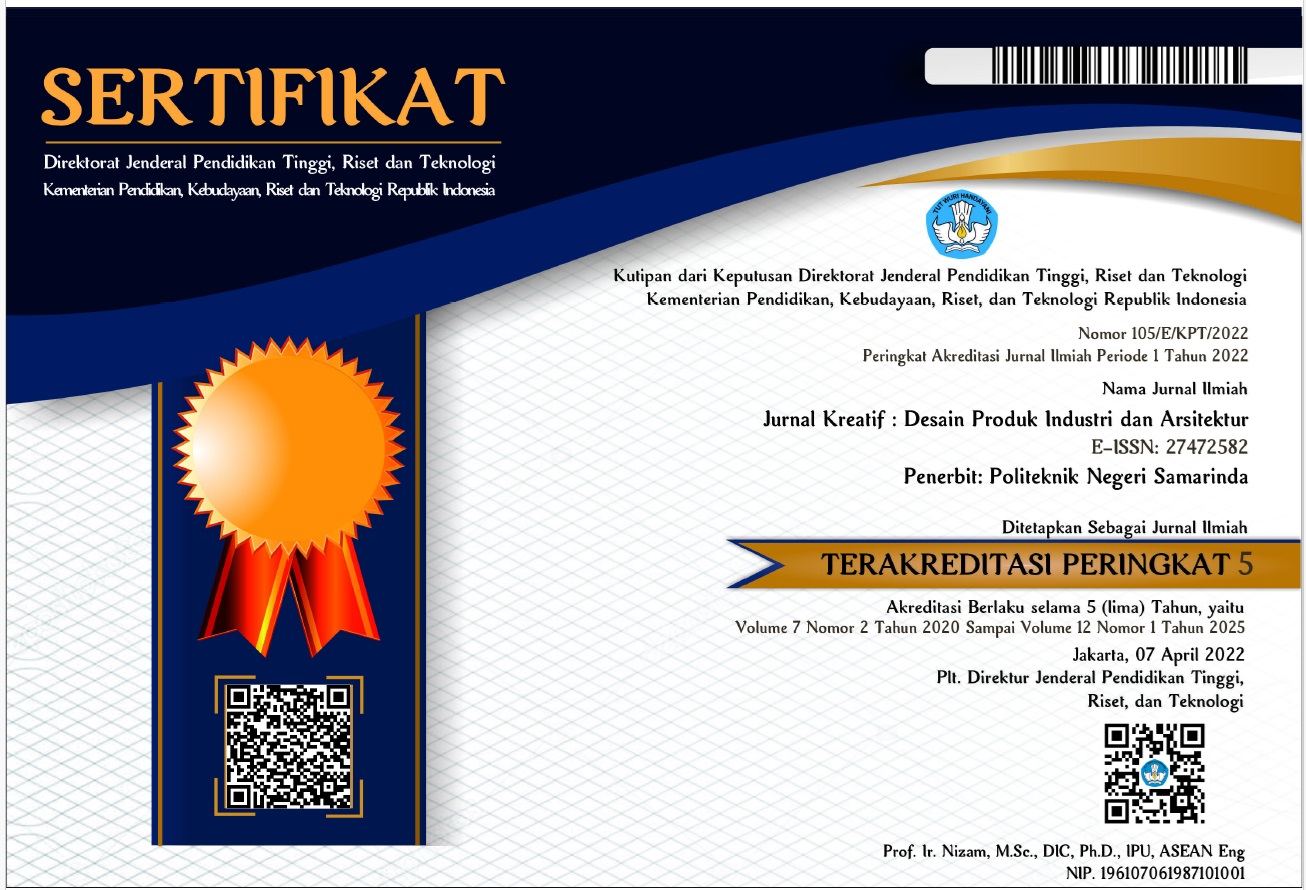KONSEP ECO DESAIN PADA DESAIN MEDIA INFORMASI DIGITAL UNTUK KAMPUS ITATS
 Abstract views: 377
,
Abstract views: 377
,
 pdf downloads: 241
pdf downloads: 241
Abstract
Kampus Institut Teknologi Adhi Tama Surabaya (ITATS) merupakan Kampus atau institusi swasta yang berbasis teknologi yang berlokasi di kota Surabaya. Kampus ITATS dinobatkan sebagai perguruan tinggi swasta unggulan di jawa timur dan menyandang predikat Eco Campus sejak 2013.
Kampus ITATS telah menyediakan beberapa media penyampaian informasi mengenai kampus seperti brosur, banner, mading, dan juga website namun media tesebut dinilai masih kurang efektif dan kurang menggambarkan kesan teknologi sebagai basis kampus ITATS. Peneliti merancang sebuah media informasi yang berbasis digital dengan mengedapankan unsur teknologi dan juga eco green yang merupakan identitas kampus ITATS. Desain media informasi berbasis digital dipilih karena sifatnya yang dinamis dan atraktif sehingga informasi yang disuguhkan menjadi lebih menarik dan modern.
Dalam tahap merancang produk ini, peneliti melakukan studi kasus terhadap beberapa media informasi yang telah ada, lalu melakukan analisa berupa analisa material, warna, bentuk, penempatan, sistem, informasi, dan interface. Peneliti juga melakukan wawancara terhadap pihak terkait guna memperoleh informasi yang akurat. Hasil akhirnya peneliti menciptakan desain media informasi digital yang sesuai dengan kriteria kampus ITATS.
Surabaya Adhi Tama Institute of Technology Campus (ITATS) is a technology-based campus or private institution located in the city of Surabaya. The ITATS campus has been named the leading private university in East Java and holds the title of eco campus since 2013.
The ITATS campus has provided a number of media for delivering information about the campus such as brochures, banners, bulletin boards, and also websites, but the media is considered ineffective and lacks an impression technology as an ITATS campus base. Researchers designed a digital-based information media by deducing elements of technology and also eco-green which is the identity of the ITATS campus. Digital-based information media design was chosen because of its dynamic and attractive nature so that the information presented becomes more attractive and modern.
In the stage of designing this product, the researchers conducted a case study of several existing information media, then conducted an analysis in the form of material, color, shape, placement, system, information, and interface analysis. Researchers also conducted interviews with related parties in order to obtain accurate information. The final result is the researcher creates a digital information media design that matches the ITATS campus criteria.
Downloads
References
MS Gumelar. 2012. “ Art & Design principles “
Santoso S. Hamijoyo , 2009, “ Komunikasi dan Partisipatoris “
Hamdan Hussein, 2010, “ Teknologi Informasi dan Komunikasi “
Ginting Rosnani, 2010, “ Perancangan Produk “
David Kent Bailast, 2007, “ Interior Design with Style “
Authors who publish with this journal agree to the following terms:
- Copyright on any article is retained by the author(s).
- The author grants the journal, right of first publication with the work simultaneously licensed under a Creative Commons Attribution License that allows others to share the work with an acknowledgment of the work’s authorship and initial publication in this journal.
- Authors are able to enter into separate, additional contractual arrangements for the non-exclusive distribution of the journal’s published version of the work (e.g., post it to an institutional repository or publish it in a book), with an acknowledgment of its initial publication in this journal.
- Authors are permitted and encouraged to post their work online (e.g., in institutional repositories or on their website) prior to and during the submission process, as it can lead to productive exchanges, as well as earlier and greater citation of published work.
- The article and any associated published material is distributed under the Creative Commons Attribution-ShareAlike 4.0 International License













